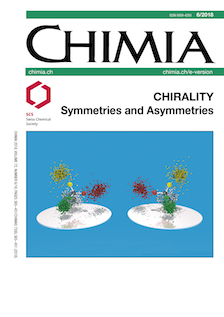Spin-orbit Coupling Modulation in DNA by Mechanical Deformations
DOI:
https://doi.org/10.2533/chimia.2018.411Keywords:
Chiral-induced selectivity effect (ciss), Dna, Spin-orbit couplingAbstract
We consider molecular straining as a probe to understand the mobility and spin active features of complex molecules. The strength of the spin-orbit interaction relevant to transport in a low dimensional structure depends critically on the relative geometrical arrangement of current-carrying orbitals. Understanding the origin of the enhanced spin-orbit interaction in chiral systems is crucial to be able to control the spin selectivity observed in the experiments, which is a hallmark of the Chiral-Induced Selectivity Effect (CISS). Recent tight-binding orbital models for spin transport in DNA-like molecules, have surmised that the band spin-orbit (SO) coupling arises from the particular angular relations between orbitals of neighboring bases on the helical chain. Such arrangements could be probed by straining the molecule in a conductive probe AFM/Break junction type setup, as was recently reported by Kiran, Cohen and Naaman. Here we report strain-dependent kinetic and SO coupling when a double-strand DNA model is compressed or stretched in two experimentally feasible setups with peculiar deformation properties. We find that the mobility and the SO coupling can be tuned appreciably by strain, and the analytical model bears out the qualitative trends of the experiments.Downloads
Published
2018-06-27
Issue
Section
Scientific Articles
License
Copyright (c) 2018 Swiss Chemical Society

This work is licensed under a Creative Commons Attribution-NonCommercial 4.0 International License.
How to Cite
[1]
Chimia 2018, 72, 411, DOI: 10.2533/chimia.2018.411.







